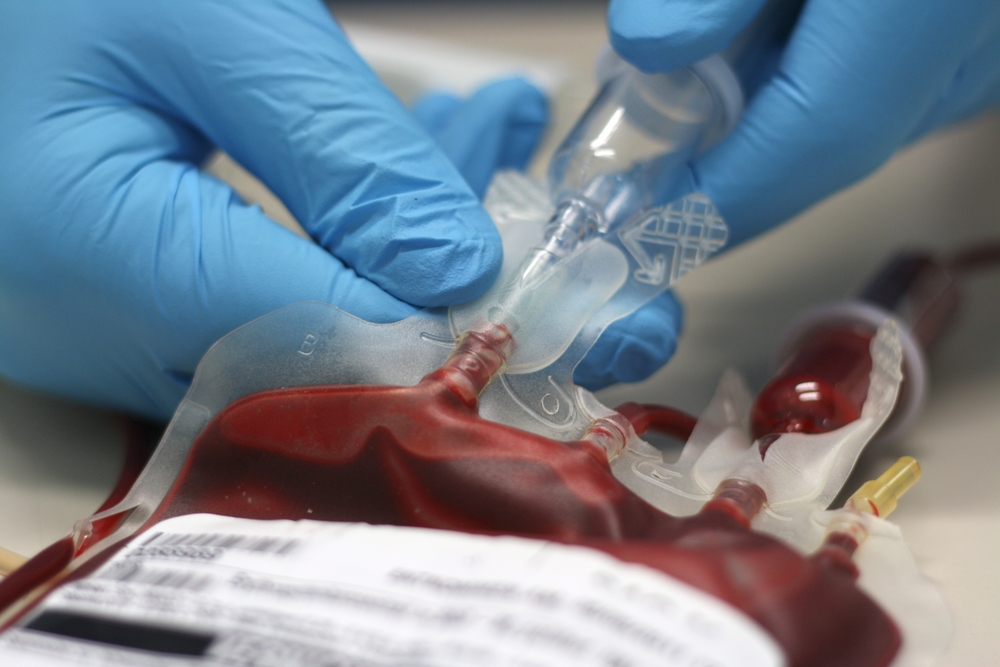New Recombinant Factor IX Products for Hemophilia B May ‘Revolutionize’ Treatment

Patient treatment for hemophilia B has come a long way since the introduction of factor IX (FIX) concentrates.
In a recent commentary published in the journal Blood and titled “A new era for hemophilia B treatment,” researchers from Oregon Health and Science University and Bloodworks Northwest highlighted recent advances in the treatment of hemophilia B patients focusing particularly on the development of a novel recombinant FIX fusion protein that increases dosing intervals.
Since the late 1980s, hemophilia treatment has become safer and more effective. Hepatitis C virus and HIV have been eliminated from plasma-derived factors and recombinant products have been introduced for hemophilia B patients. In addition, prophylaxis has become standard for preventing bleeding instead of episodic treatment in which patients only receive clotting factors in response to a bleeding episode.
Current prophylaxis therapy requires twice weekly intravenous injections of FIX replacement product to prevent spontaneous bleeding because the stability and durability of the proteins in the blood is relatively low and rapidly degrades.
In recent years, researchers have developed different technologies that prolong the half-life (durability) of the FIX proteins. In 2014, the U.S. Food and Drug Administration (FDA) approved the first of these recombinant products, which consisted of a fusion protein containing the FIX protein and a neonatal protein (neonatal Fc receptor) with increased stability. Also in 2014, Collins and colleagues published a study with the results of a Phase 3 trial assessing another recombinant FIX product, a glycoPEGylated FIX.
In a recent study, “Long-acting recombinant coagulation factor IX albumin fusion protein (rIX-FP) in hemophilia B: results of a phase 3 trial,” published in Blood, another recombinant product called rIX-FP was added to the list for showing effectiveness in hemophilia B patients and extended half-life times.
According to the commentary: ‘These products have the potential to revolutionize hemophilia treatment with dosing intervals increasing from twice a week to dosing every 7 to 21 days and increasing FIX trough (lowest) levels.”
In particular, rIX-FP is a recombinant fusion protein that links FIX with recombinant albumin, a highly stable protein. Additionally, it uses the neonatal Fc receptor to prevent the protein’s degredation and induce its recycling. The Phase 3 study of rIX-FP showed a marked increase (4.3 times) in the factor half-life compared with traditional recombinant FIX product. While with twice-a-week injections of FIX concentrates the FIX lowest levels were 1% of normal levels, with rIX-FP weekly injections the FIX lowest levels were 20% and with 14-day injections they were 12% of normal levels.
The treatment was well tolerated. Additionally, 99% of all bleeding episodes were successfully treated with rIX-FP — the vast majority with a single dose.
In the commentary, authors Jason A. Taylor and Rebecca Kruse-Jarres contend that patient treatment fatigue and adherence to prophylactic treatment may be improved with decreased dosing intervals. The lowest levels of FIX achieved with recombinant products is higher than with current treatments which may decrease the risk of bleeding in those patients.
In the past, clinicians aimed for the lowest levels to be higher than 1% because patients with moderate and mild hemophilia with FIX levels ranging from 2% to 30% still experience microbleeding. With the development of longer acting novel recombinant products, aiming for higher levels may have become possible, the authors said.





